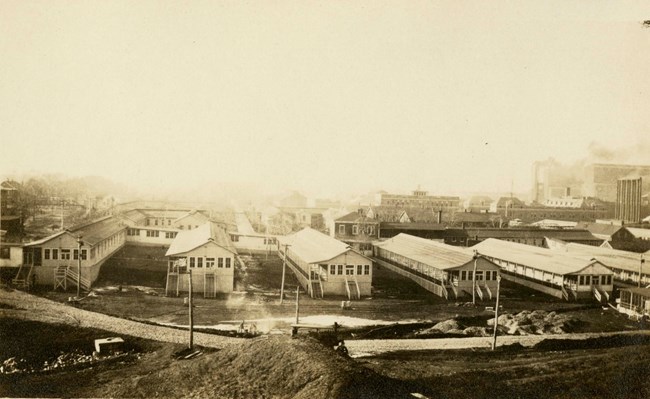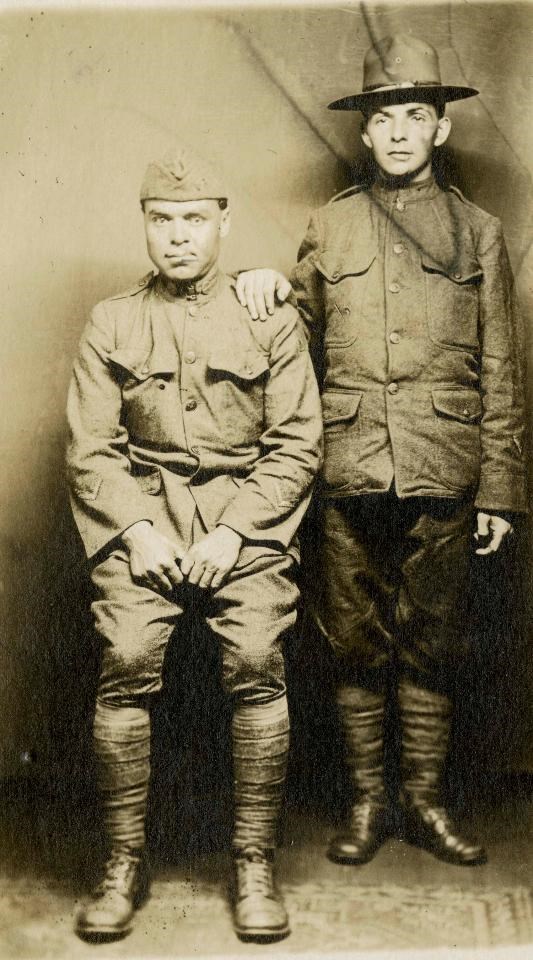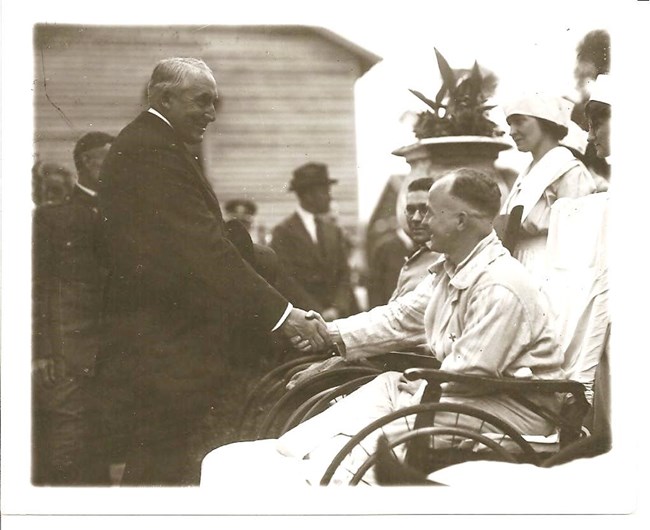
NPS U.S. Army General Hospital No. 2Fort McHenry’s most active time period in its long and varied history was not the War of 1812, but during the First World War. 
NPS Construction and Staffing

NPS Surgical CenterAs time went by, Fort McHenry became less a receiving hospital and more a surgical center. Army doctors, working with local medical schools and hospitals, developed many new surgical techniques. Much medical history was made here, particularly in neuro-surgery. Great advances were made in plastic surgery as well. Soldiers who had lost portions of their faces left the hospital with new noses, new ears, and other miraculous results of the then new surgical techniques. Facial reconstruction surgeries, as they were called, would allow these soldiers to have as close to a normal life as possible after suffering such gruesome injuries. Occupational TherapyGreat strides were also made in occupational therapy. The men were taught new job skills that could be used once they were dismissed from the hospital. Subjects taught in the Fort’s vocational school included telegraphy, metal work, basketry, commercial art, shorthand and typing. Carpentry, upholstery, auto repair, bookkeeping and even knitting were also offered to keep the wounded occupied and provide them with a possible means of livelihood. It was the first serious attempt to give disabled American veterans real employment. Nationwide Flu EpidemicWomen played a major role in the military during the First World War. Nurses, dressed in their starched white uniforms and caps, were employed by the Army. Employing their skills and caring ways, they played an important role in helping thousands of their soldier-patients on the road to a speedy recovery. 
NPS Presidential VisitOn June 14, 1922, the patients and hospital personnel were treated with a visit by their Commander-in-Chief, President Warren G. Harding. He was at the Fort on this special Flag Day to dedicate the newly erected statue of Orpheus, a memorial to Francis Scott Key and the defenders of Baltimore in 1814. The statue can be seen at the park today. The Hospital ClosesThe last of the patients of General Hospital No. 2 were released in 1923. For the first time in six years, not one soldier was in Fort McHenry for medical treatment. The War Department would make the Fort a National Park in 1925 and tear down the empty, decaying hospital buildings two years later. The old brick Star Fort and its silent cannon were all that remained of the 125 years of military occupation. A new phase in the life of the old fort was about to begin – that of national park. |
Last updated: June 10, 2025
